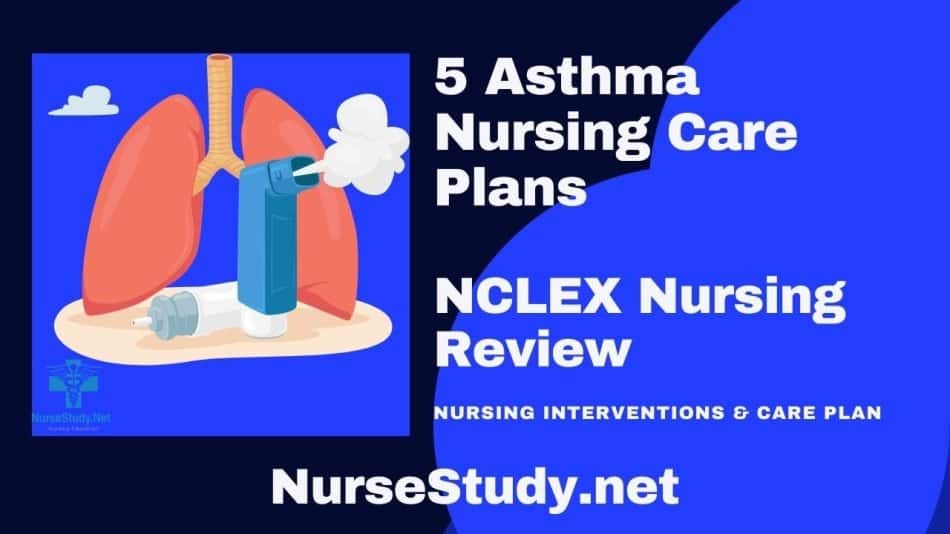Asthma is a chronic respiratory condition affecting millions worldwide, characterized by airway inflammation, hyperresponsiveness, and intermittent obstruction. As front-line healthcare providers, nurses play a crucial role in assessing, managing, and educating patients with asthma. This comprehensive guide explores the essential aspects of asthma nursing diagnosis and care planning.
Understanding Asthma: A Nursing Perspective
Asthma manifests through episodes of bronchial constriction, leading to breathing difficulties that can range from mild to life-threatening. The condition affects both adults and children, with symptoms including:
- Wheezing during breathing
- Chest tightness and pain
- Shortness of breath
- Persistent coughing, especially at night
- Difficulty performing daily activities
Nursing Assessment for Asthma
History Taking
Current Symptoms
- Duration and frequency of symptoms
- Severity of episodes
- Triggers and alleviating factors
- Impact on daily activities
Medical History
- Previous hospitalizations
- Emergency department visits
- History of intubation
- Comorbid conditions
- Family history of asthma or allergies
Environmental Factors
- Exposure to allergens
- Home and work environment
- Smoking status (active or passive)
- Air quality in the living area
Physical Assessment
Vital Signs Monitoring
- Respiratory rate and pattern
- Heart rate and blood pressure
- Oxygen saturation
- Temperature if infection suspected
Chest Assessment
- Use of accessory muscles
- Presence of wheezing
- Breath sound characteristics
- Signs of respiratory distress
General Assessment
- Level of consciousness
- Ability to speak in complete sentences
- Color of skin and mucous membranes
- Signs of anxiety or distress
Nursing Care Plans for Asthma
1. Ineffective Breathing Pattern
Nursing Diagnosis Statement:
Ineffective Breathing Pattern related to bronchial inflammation and airway hyperresponsiveness as evidenced by dyspnea, use of accessory muscles, and abnormal breathing patterns.
Related Factors:
- Bronchial inflammation
- Airway hyperresponsiveness
- Mucus accumulation
- Anxiety and stress
Nursing Interventions and Rationales:
- Position the patient upright to optimize lung expansion
- Monitor respiratory rate, depth, and pattern
- Teach pursed-lip breathing techniques
- Administer prescribed medications
- Perform chest physiotherapy as ordered
Desired Outcomes:
- The patient demonstrates an improved breathing pattern
- Maintains oxygen saturation above 95%
- Reports decreased work of breathing
2. Risk for Impaired Gas Exchange
Nursing Diagnosis Statement:
Risk for Impaired Gas Exchange related to alveolar-capillary membrane changes secondary to the inflammatory process.
Related Factors:
- Bronchial edema
- Increased mucus production
- Airway inflammation
- Ventilation-perfusion mismatch
Nursing Interventions and Rationales:
- Monitor oxygen saturation continuously
- Assess breath sounds every 2-4 hours
- Position patient to optimize ventilation
- Encourage deep breathing exercises
- Maintain oxygen therapy as prescribed
Desired Outcomes:
- Maintains adequate oxygenation
- Demonstrates clear breath sounds
- Reports improved breathing comfort
3. Knowledge Deficit
Nursing Diagnosis Statement:
Knowledge Deficit related to lack of exposure to asthma management information as evidenced by incorrect use of inhalers and poor understanding of triggers.
Related Factors:
- Limited previous exposure to information
- Misunderstanding of medical instructions
- Language or cultural barriers
- Complex medication regimens
Nursing Interventions and Rationales:
- Provide comprehensive asthma education
- Demonstrate proper inhaler technique
- Review the asthma action plan
- Teach trigger identification and avoidance
- Validate understanding through the teach-back method
Desired Outcomes:
- Demonstrates correct inhaler technique
- Identifies personal triggers
- Verbalizes understanding of action plan
4. Risk for Activity Intolerance
Nursing Diagnosis Statement:
Risk for Activity Intolerance related to imbalance between oxygen supply and demand.
Related Factors:
- Increased work of breathing
- Decreased energy levels
- Fear of triggering symptoms
- Deconditioning
Nursing Interventions and Rationales:
- Assess activity tolerance
- Plan activities with rest periods
- Teach energy conservation techniques
- Monitor vital signs during activity
- Implement a gradual exercise program
Desired Outcomes:
- Participates in daily activities without distress
- Maintains appropriate activity level
- Reports improved endurance
5. Anxiety
Nursing Diagnosis Statement:
Anxiety related to acute episodes of dyspnea as evidenced by expressed feelings of apprehension and increased respiratory rate.
Related Factors:
- Fear of suffocation
- Previous traumatic experiences
- Lack of control over symptoms
- Social isolation
Nursing Interventions and Rationales:
- Provide emotional support
- Teach relaxation techniques
- Explain all procedures
- Include family in care planning
- Maintain calm environment
Desired Outcomes:
- Demonstrates reduced anxiety levels
- Uses effective coping strategies
- Reports improved sense of control
If you would like the full-size PDF sent, please see below.
Patient Education and Prevention
Effective asthma management requires comprehensive patient education focusing on:
Medication Management
- Proper use of inhalers
- Understanding of controller vs. rescue medications
- Recognition of side effects
Trigger Avoidance
- Environmental modifications
- Allergen control measures
- Lifestyle adjustments
Self-Monitoring
- Peak flow meter use
- Symptom diary maintenance
- Action plan implementation
References
- Ackley, B. J., Ladwig, G. B., Makic, M. B., Martinez-Kratz, M. R., & Zanotti, M. (2023). Nursing diagnoses handbook: An evidence-based guide to planning care. St. Louis, MO: Elsevier.
- Berger WE. New approaches to managing asthma: a US perspective. Ther Clin Risk Manag. 2008 Apr;4(2):363-79. doi: 10.2147/tcrm.s1382. PMID: 18728834; PMCID: PMC2504058.
- Harding, M. M., Kwong, J., & Hagler, D. (2022). Lewis’s Medical-Surgical Nursing: Assessment and Management of Clinical Problems, Single Volume. Elsevier.
- Herdman, T. H., Kamitsuru, S., & Lopes, C. (2024). NANDA International Nursing Diagnoses – Definitions and Classification, 2024-2026.
- Ignatavicius, D. D., Rebar, C., & Heimgartner, N. M. (2023). Medical-Surgical Nursing: Concepts for Clinical Judgment and Collaborative Care. Elsevier.
- Lizzo JM, Goldin J, Cortes S, et al. Pediatric Asthma (Nursing) [Updated 2024 May 4]. In: StatPearls [Internet]. Treasure Island (FL): StatPearls Publishing; 2024 Jan-. Available from: https://www.ncbi.nlm.nih.gov/books/NBK568735/
- Silvestri, L. A. (2023). Saunders comprehensive review for the NCLEX-RN examination. St. Louis, MO: Elsevier.


